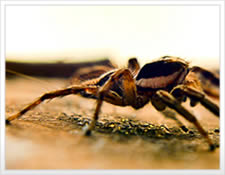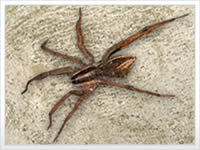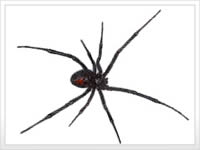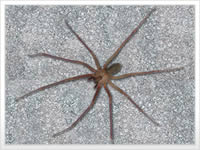Spider Control
Spider Treatment and Eradication for Homes & Businesses
Unfortunately, for the real world, spiders are not as pleasant as they are portrayed in Charlotte’s Web. Instead, spiders weave dust-collecting webs in all areas of the home, lay eggs containing up to 400 offspring, and hide in dark places where they can bite or startle people. Food and shelter are their main goals, as most living things.

Don't Live with Spiders Any Longer Contact Us Today!
Spider Control Services in western NC
We definitely don’t want any of these spiders climbing up your waterspout and into your home. At GoForth Services, we utilize quick and effective methods to solve your spider infestation.These methods may include using sprays and powders inside and outside the property to optimize the removal rate. Within days of placing these substances in crevaces, cracks, basements, and other locations you’ll begin to see results. Our pest control experts know how to get rid of spiders. Schedule an Inspection today!
Common Spiders of WNC
In western North Carolina, we see our share of spiders; there are four types in particular that enjoy invading residential and commerical properties. The three most intimidating of these four spiders burrow outside under debris, rocks and wood piles, and hideout indoors in basements and garages. On the other hand, little common House Spiders are not as shy, weaving their webs in any corner of your home.
Common Household Spiders
What we recognize as a common household spider is not one particular spider, but several identifiable and unidentifiable spiders. These spiders are usually tan or light brown with dark markings on the underside of their globe-shaped abdomens. They usually measure in around 3/8 of an inch, and are generally not dangerous, but can be a nuisance and cause skin irritation when they bite.

Wolf Spiders
There are 125 species of the Wolf spider, and that’s for the US alone. The native North Carolina Wolf arthropods (Hogna carolinensis) are the largest spiders in the state, measuring up to 1½ inches. They come in a variety of colors, including brown, black, gray, white, and sometimes yellow or green. These hairy Lycosidae family members are creepy spiders with three rows of eyes, totaling 8 eyes.

Black Widow Spiders
In America, there are three species of Black Widows. The southern black widow is known as Latrodectus mactans. There is one important difference between the shiny, large bellied female black widows and the smaller dull male widows: venom. Male widows are not poisonous, nor do they have the red hourglass shape on the underside of the abdomen. They are twice as small as the 8 to 13mm sized female, making distinction very simple. These venomous spiders are dangerous, particularly to the elderly and young children, and should be removed by a professional.

Brown Recluse Spiders
The most common Brown Recluse species found in North Carolina and the eastern part of the country, is the Loxosceles reclusa. Their signature look is the violin-shaped mark on top of the neck (cephalothorax). The Brown Recluse, like the Wolf Spider, has three rows of eyes, but only totaling 6 peepers. These spiders are on average about ¼ to ½ inch in length.








